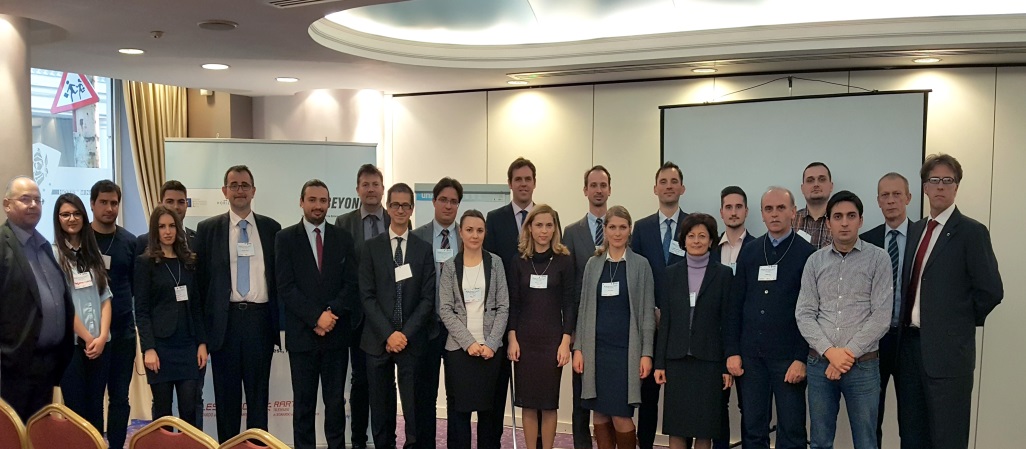To help eastern European countries prepare for the optimal adoption of European GNSS (E-GNSS) applications in the multimodal domains, the GSA-funded BEYOND project organised an array of events and training aimed at building the region’s E-GNSS capacity.
Efficient multimodal transportation is an essential  component to the free movement of goods and to the European Union’s internal market. To ensure that all Member States have the means to optimise their access to the open market, such GSA-funded initiatives as the BEYOND project are advocating for the adoption of E-GNSS applications for use in the multimodal domains in Romania, Bulgaria, Hungary, Turkey and their neighbouring countries.
component to the free movement of goods and to the European Union’s internal market. To ensure that all Member States have the means to optimise their access to the open market, such GSA-funded initiatives as the BEYOND project are advocating for the adoption of E-GNSS applications for use in the multimodal domains in Romania, Bulgaria, Hungary, Turkey and their neighbouring countries.
Watch this: European Space Programmes – Strengthening Internal Markets
Multimodal transport is the transportation of goods under a single contract but performed using at least two different means of transport, such as rail, sea and road. In such an arrangement, the carrier remains responsible for the entire transport process, although the actual transportation is typically done by individual sub-carriers.
A key component to successful multimodal transport is e-freight – also the area where E-GNSS comes into play. E-freight is a paperless freight transport system that attaches an electronic flow of information to the actual physical flow of goods. This in turn allows for intelligent, or automated, cargo shipping. As positioning services are an integral part of this concept, multimodal logistics represent a significant market for E-GNSS. With E-GNSS, one can utilise such vital applications as container ‘corridoring’ and geo-fencing or providing geo-referenced cargo status monitoring, seamlessly integrated across transport modes and geographies.
Going BEYOND borders with E-GNSS
Launched in 2015, the Horizon 2020 BEYOND project supports the competitiveness of EU industry by developing new market opportunities in eastern European and Euromed countries. In the case of multimodal transportation, the project’s activities focused on building awareness about the use and added value offered by such E-GNSS programmes as Galileo and EGNOS. Led by Telespazio and with a focus on Romania, Bulgaria, Hungary and such neighbouring countries as Turkey, the project held a range of dissemination events and activities to help prepare these countries for optimal adoption of E-GNSS applications within the multimodal domain.
Key outcomes of the project include:
- creation and analysis of a database on existing GNSS sources in Euromed countries;
- stakeholder survey identifying specific needs and showing how GNSS-based applications can help address such needs;
- promoting wider use of E-GNSS in Turkey – a promising market for E-GNSS applications – and adopting an enhanced roadmap to prepare the country for integrating E-GNSS technologies, services and applications.
“Based on this work, we can say with confidence that all involved countries stand to benefit greatly from making investments in developing and upgrading their E-GNSS networks,” says Gian Gherardo Calini, GSA Head of Market development.
The BEYOND Final User Forum is scheduled for the 14th-15th June 2017 in Tallinn, Estonia. More information can be found http://www.beyondproject.eu/.
Media note: This feature can be republished without charge provided the European GNSS Agency (GSA) is acknowledged as the source at the top or the bottom of the story. You must request permission before you use any of the photographs on the site. If you republish, we would be grateful if you could link back to the GSA website (http://www.gsa.europa.eu).